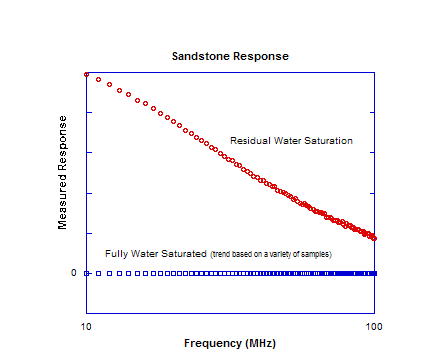|
A Revolutionary New Logging Concept
The ideal logging tool is one which is only sensitive to the presence of hydrocarbons. A new concept exploiting electric polarization phenomena in rocks achieves this goal.
In the 1960’s Poley et al had the right idea in trying to utilize the polarization (dielectric) properties of rocks. They (including all others as well as myself) focused on the dielectric properties of the constituents, trying to formulate a viable mixing relationship for rock, oil/gas, water, and clay (if present) – knowing the porosity, While above 1 GHz the dielectric behavior tends to be frequency and salinity independent making interpretation easier, the RF region (which was of most interest because of deeper penetration into the formation) is much more complicated due to geometrical and clay effects. There is a much easier approach that does not require any mixing relation and may be applicable to all rock types and salinities
Proof of Concept – The two saturation states easiest to achieve in the lab are fully water saturated and residual water (used Soltrol 130). A proof of concept measurement is shown below.

Work Remaining – While the underlying physics is very straight forward and could stand alone, many more measurements are needed in support as well as to help establish what conditions are necessary to achieve success in the field. A measurement lab is essential with a focus only in the RF region required. The measurements needed are much simpler than dielectric measurements.
Application – This new logging concept could become the equivalent of the “resistivity log” of the past century. It would not only be especially powerful in fresh water situations (deliver on what the dielectric log did not), but also be of great use in general (even LWD). The logging technology needed already exists, but will require some modification (and possible updating) in this unique approach.
|

